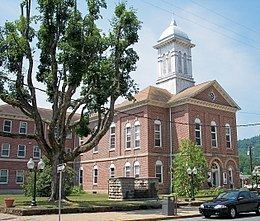Name C. Kemble | Role Architect | |
 | ||
C. C. Kemble (born 1831) was a prominent architect in West Virginia during the mid-to-late 19th century.
Contents

Biography
Charles C. Kemble was born in New York around 1831, but little is known about his early life. He entered Bucknell University in 1856, but did not graduate. By 1868, he was working for Joseph W. Kerr in Pittsburgh. In 1870, when he completed his first West Virginia building, he was practicing in Philadelphia. But, by the time of that year's census, he was living in Wheeling with his wife and two children In 1879 he became supervising architect of the new state capitol at Charleston, with Andrew Peebles of Pittsburgh as primary architect.
In 1883 Kemble was appointed supervising architect for the new U. S. Post Office in Charleston, where he then moved. The building was built in 1884. Kemble was relieved of his duties at the state capitol that same year, and retired to Pittsburgh. He was in Chicago in 1885, and Harrisburg by 1896.
Attributions
Buildings in several states have been attributed to Kemble, including:
Additionally, it is likely Kemble designed other buildings in the state which have not yet been attributed to him.
Kemble's buildings were designed in a variety of styles, from sedate to elaborately fanciful. The most common architectural style he used was Second Empire, but overall his buildings were eclectic.
Woodburn Hall is the centerpiece of West Virginia University's downtown campus, and is probably Kemble's most memorable structure. It is a stunning example of the Second Empire style.
